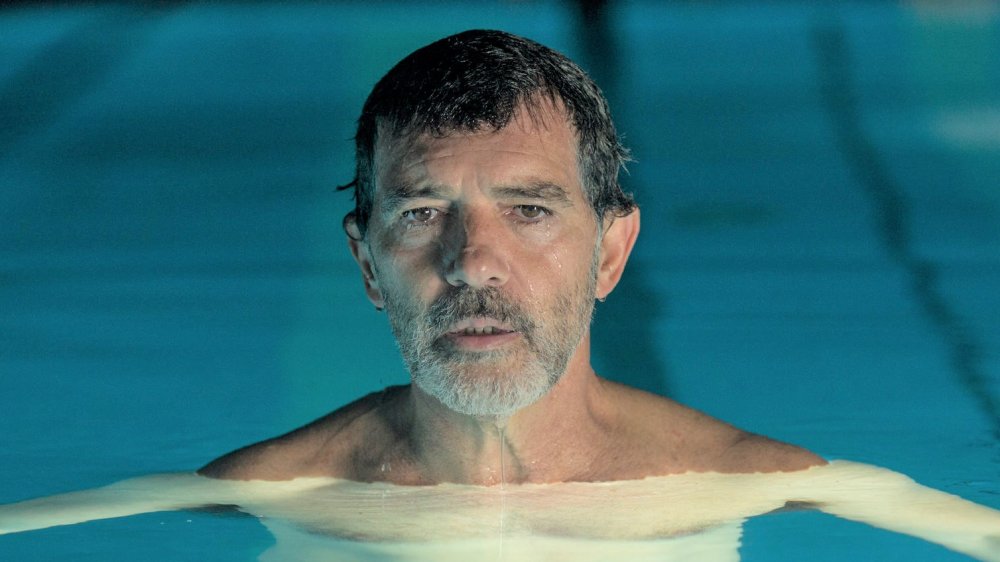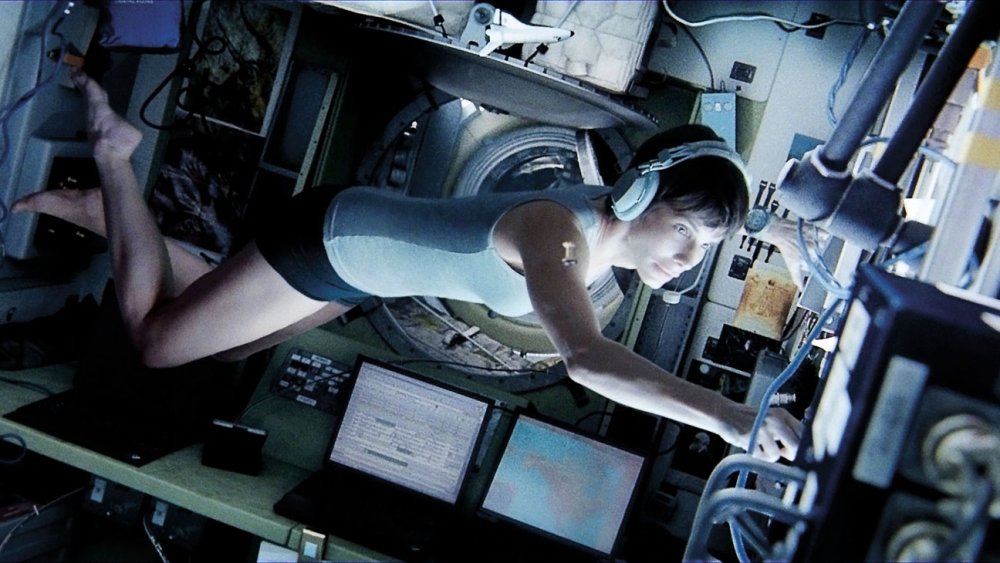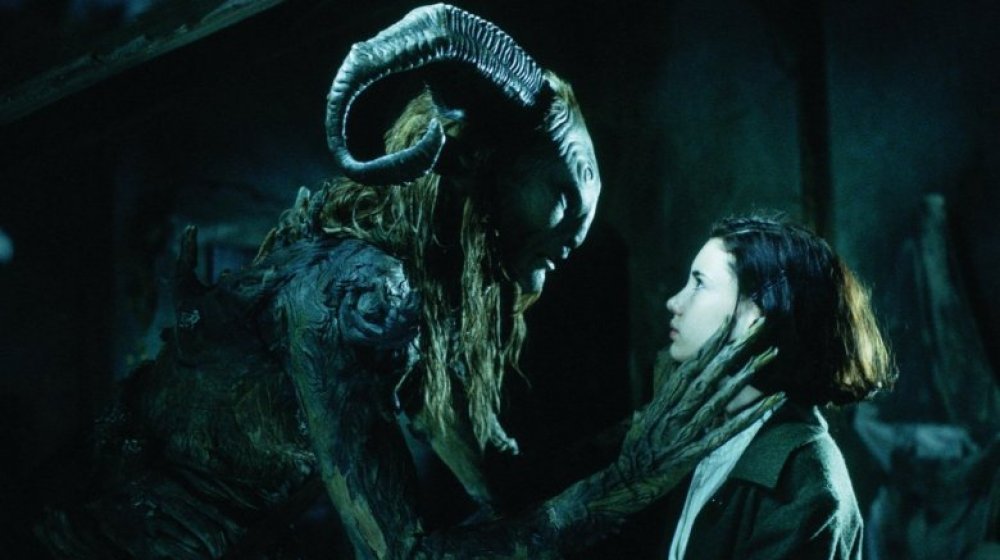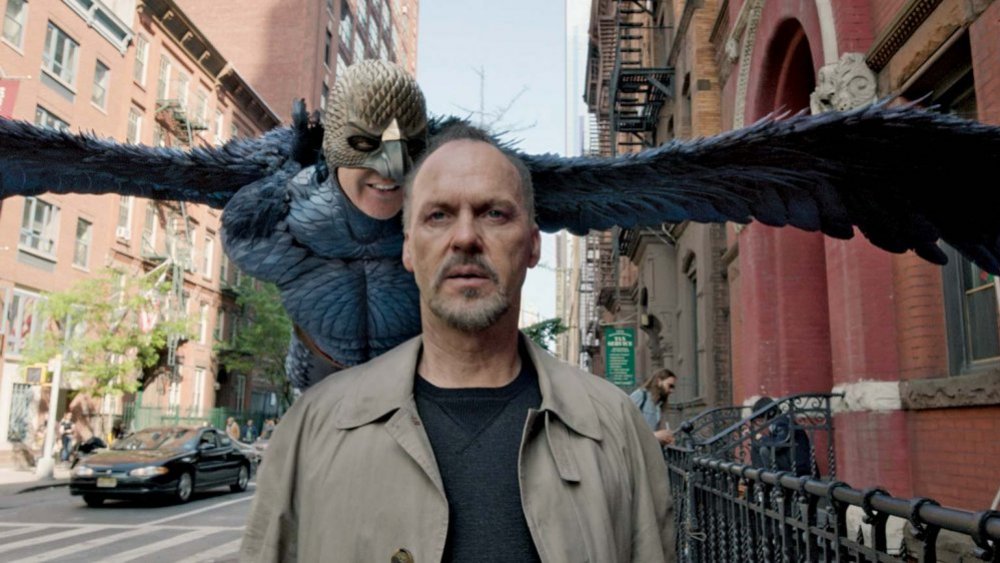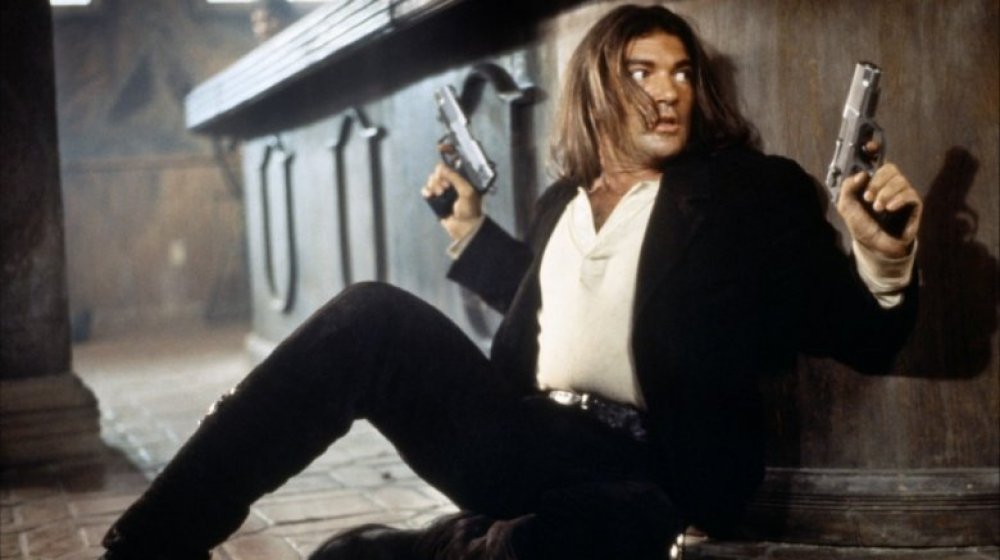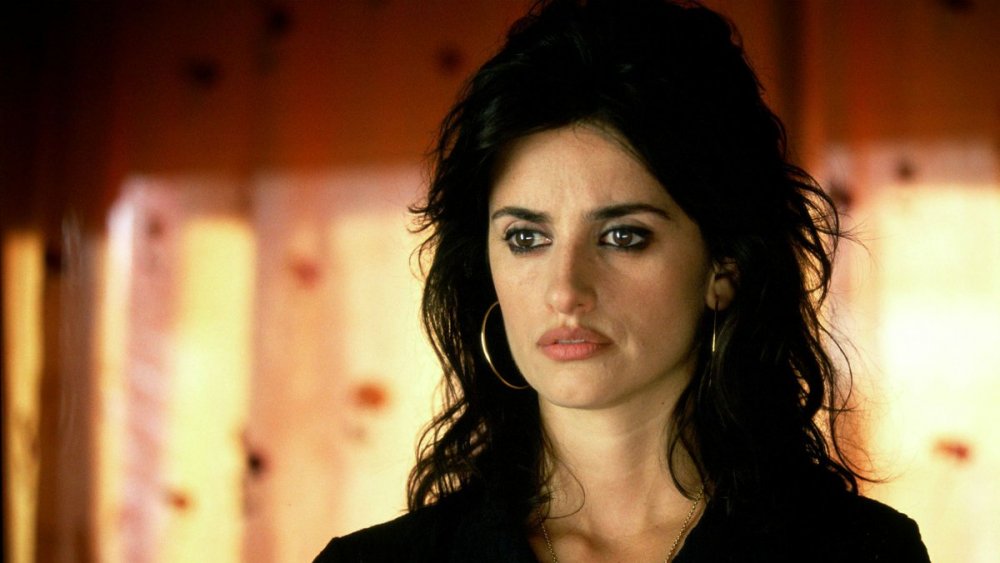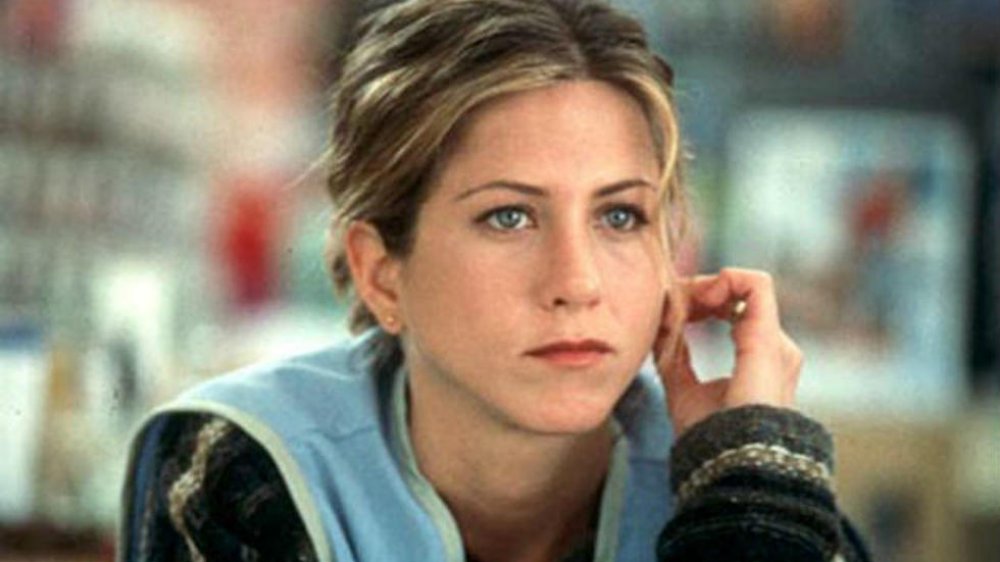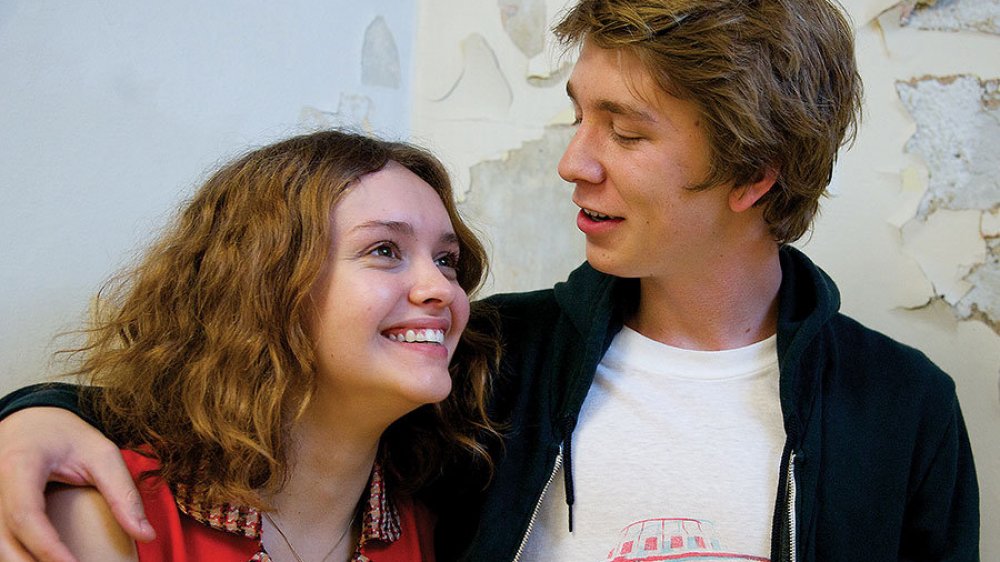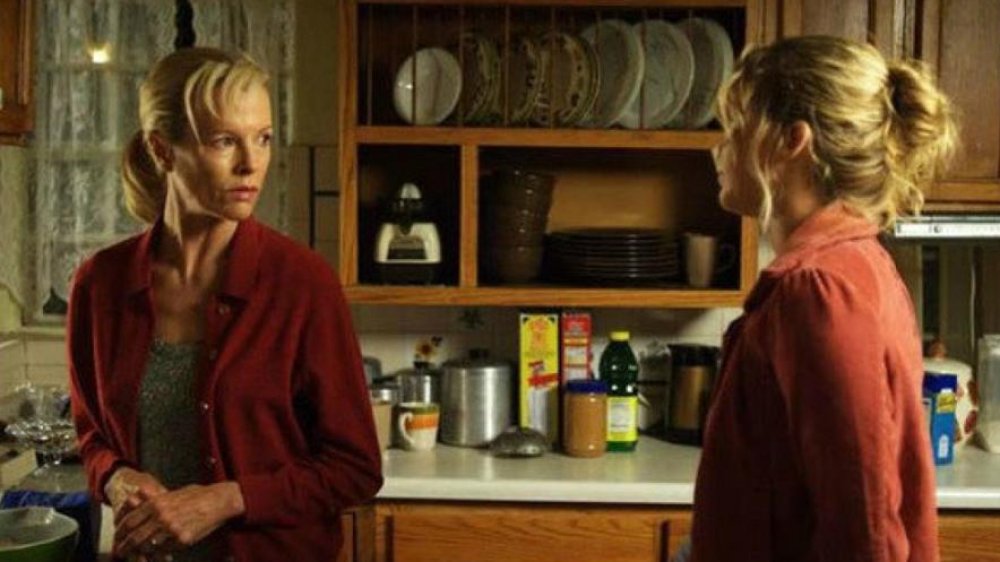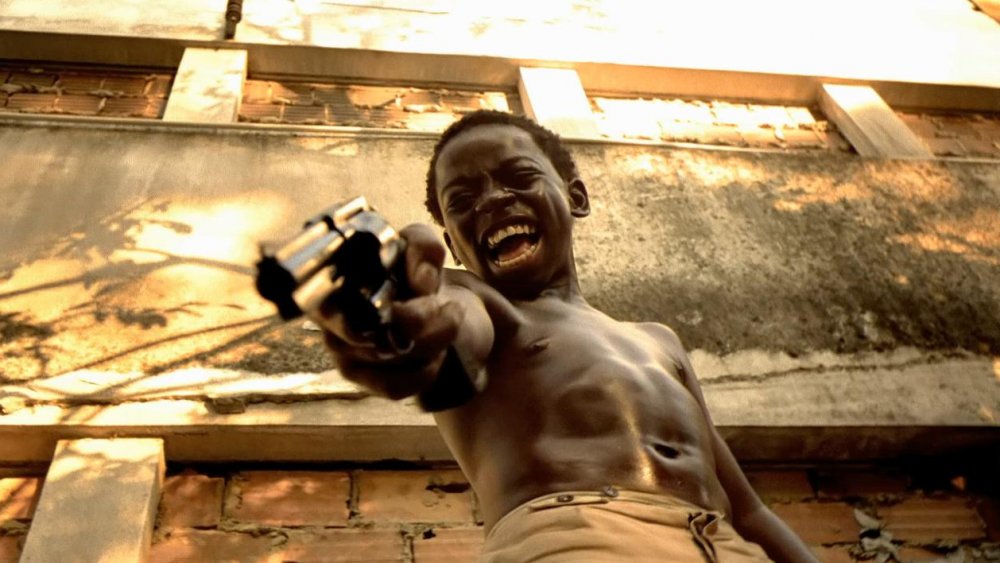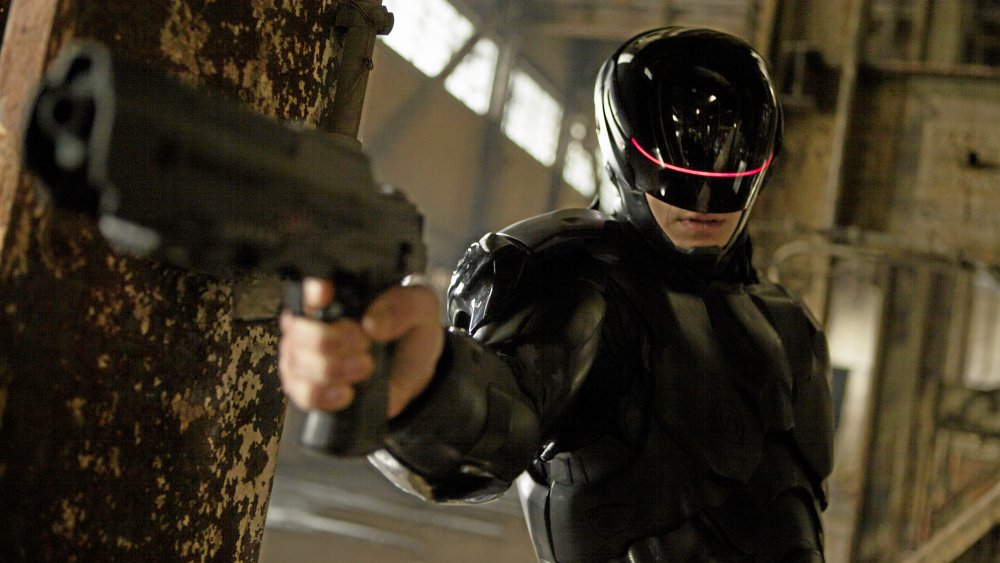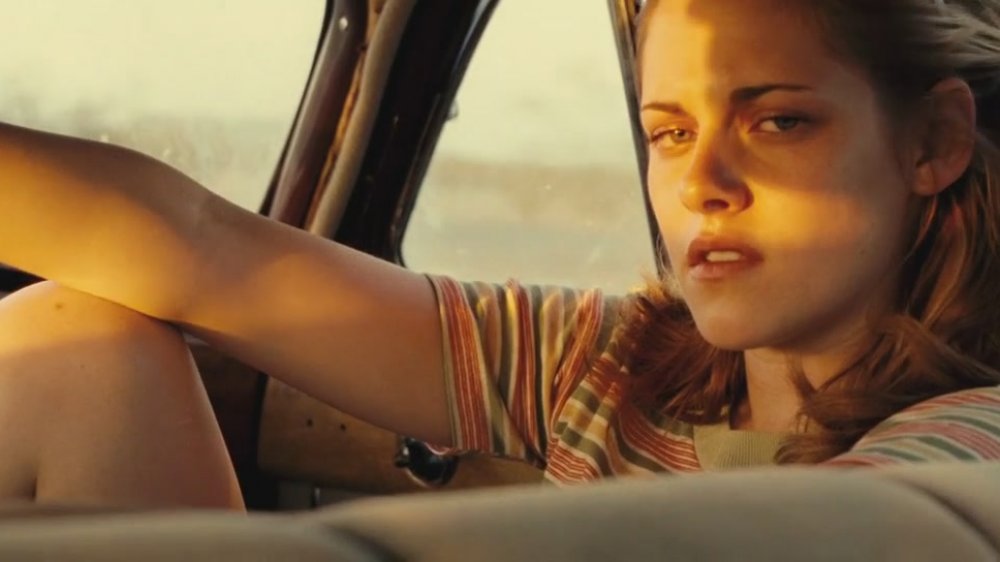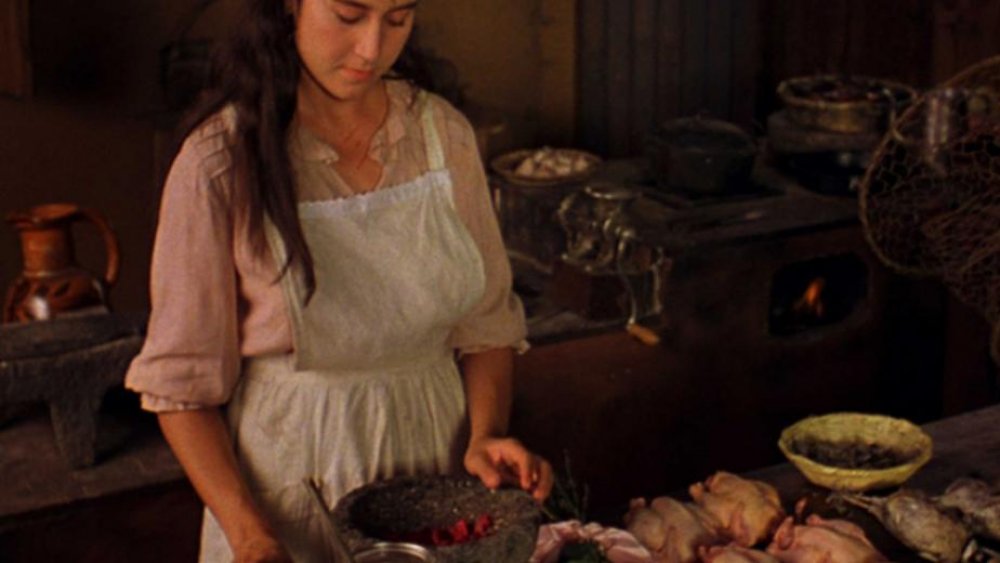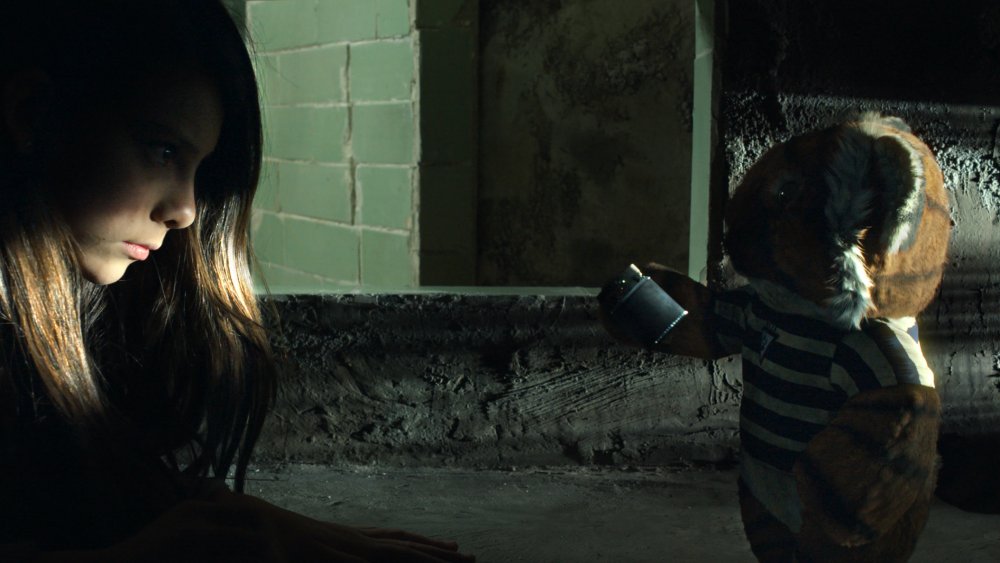Movies By Latinx Directors You Should Watch
There's no denying that, even after decades have gone by, Hollywood still remains stunningly white to a polarizing degree. However, as audiences get more diverse and demand better representation, movies are thankfully getting more diverse as well, allowing for more inclusion in the film industry.
However, as recently as August 2019, reports emerged that Hollywood is still doing a pretty bleak job of representing one major group — Latinx performers, directors, and writers. According to outlets like Vice, a study from USC called "Latinos in Film: Erasure On Screen & Behind the Camera" revealed that Latinx characters, actors, and stories are woefully underrepresented.
Fortunately, there are still quite a few Latinx talents out there, and they're directing some incredibly powerful films. Some are busy working in the United States, while others are making their cinematic magic in places like Spain, Mexico, or Brazil. Regardless of their country of origin, these filmmakers have taken the world by storm. From major franchise installments to Academy Award winners to hugely ambitious epics, here are some amazing movies by Latinx directors that you should definitely check out.
Alfonso Cuarón made Oscar history
There aren't many directors, Latinx or otherwise, as influential as Alfonso Cuarón, who's become one of the industry's most venerated directors since he got his start in the 1990s. Born and raised in Mexico City, Cuarón released his first international films — 1995's Little Princess and 1998's Great Expectations, two literary adaptations — before gaining fame and notoriety thanks to 2001's Y tu mamá también. After scoring an Academy Award nomination for the screenplay, Cuarón was chosen to direct the third movie in the ultra-popular Harry Potter franchise, Harry Potter and the Prisoner of Azkaban, which many regard as a huge turning point for the film series' maturity.
More acclaimed films followed, including 2003's sci-fi masterpiece Children of Men, and in the end, Cuarón didn't stop at a single screenplay nod at the Academy Awards. In 2010, he made history by becoming the first Latin American director in Oscar history to take home a statue for Best Director for his ambitious space odyssey, Gravity, which was also nominated for Best Picture. Years later, he triumphantly returned to win Best Director for Roma, his incredibly personal, sweeping family drama, which marked the first time a foreign-language film was awarded for directing and the first time a Mexican film won Best Foreign Language Film. There's no question that Cuarón is one of the most important living Latinx directors, and there's no bad place to start in his filmography.
Guillermo del Toro is the king of terrifying fantasy
If you're a horror or fantasy fan, you're definitely familiar with Guillermo del Toro. Born in Guadalajara, Mexico, del Toro first made waves in 1993 with Cronos, his operatic interpretation of the vampire myth (and his first collaboration with the great Ron Perlman). After getting attention with the 1997 creature feature Mimic and 2001's ghostly classic The Devil's Backbone, del Toro moved into blockbuster territory with 2002's Blade II and 2004's Hellboy.
But it was in 2006 that del Toro would take the world by storm. That year, the director released the staggeringly beautiful and bloody Pan's Labyrinth. This ambitious, gothic horror film set in the aftermath of the Spanish Civil War remains one of del Toro's most enduring and defining films. Ultimately, after two more blockbusters (2008's Hellboy II and 2013's Pacific Rim) and another creative ghost story (2015's Crimson Peak), del Toro took over awards season with 2017's The Shape of Water. The tale of a mute woman falling in love with an amphibious man, it won Best Picture at that year's Academy Awards and nabbed Best Director for del Toro. So, if you're looking for horror films with plenty of creativity and heart, you should probably start with The Shape of Water or Pan's Labyrinth, but anything you pick will be phenomenal.
Alejandro González Iñárritu is a Latinx director who makes visceral, powerful films
Known for his epic, ambitious films that combine insane technical flourishes with extremely personal stories, Alejandro González Iñárritu, who was born in Mexico City, has quickly risen through the ranks to become one of cinema's most sought-after directors. In fact, Iñárritu is close friends with his two most successful contemporaries, Alfonso Cuarón and Guillermo del Toro, which has earned the trio the nickname of "the Three Amigos" within the film industry.
After his 2000 feature film debut, the thriller Amores perros, Iñárritu made waves with 2003's 21 Grams, which starred big Hollywood names like Naomi Watts, Sean Penn, and Benicio del Toro. A few years later, he completed his unplanned, informal "Death Trilogy" with 2006's Babel, which earned a nod for Best Picture at the Academy Awards, followed closely by 2010's Biutiful, which starred Javier Bardem and scored a nomination for Best Actor.
Eventually, Iñárritu became an awards season darling. In 2014, Iñárritu directed Birdman or (The Unexpected Virtue of Ignorance), which starred Michael Keaton, Edward Norton, and Emma Stone, and told the story of a washed-up superhero actor looking for respect. The film ultimately beat out stiff competition to win Best Picture and Best Director. Then, in 2015, he unleashed The Revenant, an icy film that focused on a wounded mountain man searching for revenge, and it earned Iñárritu his second statue for Best Director and a long-awaited Best Actor award for star Leonardo DiCaprio. Throughout his career, Iñárritu has made history multiple times, and you'll be stunned by any of his high-concept films.
Robert Rodriguez is a master of over-the-top action
A frequent collaborator of legendary director Quentin Tarantino, Robert Rodriguez, who was born in Texas to Mexican immigrants, has made a name for himself thanks to his highly ambitious and action-packed films. After starting off with the 1992 action film El Mariachi, which was made on a shoestring budget and is entirely in Spanish, Rodriguez broke onto the scene in a big way in 1995 with its over-the-top sequel, Desperado. With Antonio Banderas and Salma Hayek in the leading roles and Rodriguez's signature touches of sharp humor mixed with unbeatable action, the director was suddenly a hot commodity in Hollywood, and his next two films, 1996's vampire actioner From Dusk Till Dawn (an early collaboration with Tarantino) and the youthful 2001 blockbuster Spy Kids, put him on the map in a big way.
In 2003, Rodriguez completed his "Mariachi Trilogy" with Once Upon a Time in Mexico, and in 2005, he had his biggest hit yet with Sin City, a highly stylized adaptation of Frank Miller's defining graphic novel. Between other projects for young audiences, like 2005's The Adventures of Sharkboy and Lavagirl, and his Planet Terror installment of 2007's Grindhouse, Rodriguez has established himself as one of the most original directors working today, so start with his signature "Mariachi Trilogy" and then dive into the rest of his work.
The movies of Pedro Almódovar are dark, brooding, and sexy
Born in a small town in Spain, Pedro Almódovar has become one of the country's most prolific directors over the years, producing introspective and gorgeous films that transcend both language and country to draw in any viewer. Several famous actors, including Antonio Banderas and Penélope Cruz, have featured prominently in his many films, and Almódovar also places an exciting emphasis on the raw, real stories of Spanish women, with critics and fans referring to his regular actresses as "chicas Almódovar," or Almóvodar women.
After making an incredibly low-budget debut film — 1980's Pepi, Luci, Bom — Almóvodar rose to prominence with 1982's Labyrinth of Passion and 1983's Dark Habits, establishing himself as the "enfant terrible" of Spanish cinema. Over the years, Almóvodar went on to make beloved films like 1988's hilarious Women on the Verge of a Nervous Breakdown, 2006's entertaining Volver, 2011's disturbing The Skin I Live In, 2019's powerful Pain and Glory, and many more. If you want to make your way through Almóvodar's challenging, brooding, and darkly sexual body of work, there's no bad place to begin.
Miguel Arteta is a Latinx director who brings the laughs
A native of San Juan, Puerto Rico, Miguel Arteta got his start working under great directors like Jonathan Demme, Sidney Lumet, and Sydney Pollack before making his 199 directorial debut with the dark, critically acclaimed independent film Star Maps. From there, Arteta put in some time on the small screen, directing episodes of shows like Homicide: Life on the Street, Freaks and Geeks, Six Feet Under, The Office, Ugly Betty, and American Horror Story.
Eventually, Arteta moved onto bigger and funnier projects. In 2002, his re-telling of the classic novel Madame Bovary, 2002's The Good Girl, put him on the map thanks to its high-profile star Jennifer Aniston. From there, his profile only grew, thanks to projects like 2010's Youth in Revolt (starring Michael Cera), 2011's Cedar Rapids (starring Ed Helms), and 2020's Like a Boss (starring Tiffany Haddish, Rose Byrne, and Salma Hayek), among others. If you're looking for an irreverent comedy with an independent streak, Arteta's filmography is definitely right for you.
Alfonso Gomez-Rejon directed a heartbreaking coming-of-age story
If you're a huge fan of Ryan Murphy's all-encompassing anthology series American Horror Story, which has captivated audiences throughout several seasons since 2011, you might recognize Alfonso Gomez-Rejon's name from its opening credits.
The director got his start as a personal assistant to huge names like Nora Ephron, Martin Scorsese, Robert De Niro, and Alejandro González Iñárritu, and Gomez-Rejon worked as a second-unit director on films like Babel, Argo, and Eat, Pray, Love. And after teaming up with Murphy to direct episodes for both Glee and American Horror Story — and earning both Emmy and Golden Globe nominations for the latter — Gomez-Rejon made his first film in 2015.
Me and Earl and the Dying Girl tells the story of an antisocial teenager who befriends a girl dying of cancer, and it features stars like Nick Offerman, Connie Britton, and Jon Bernthal. A legit tearjearker, it earned positive reviews and screened at the 2015 Sundance Film Festival. If you're a fan of Gomez-Rejon's work on the small screen, you'll definitely be a fan of Me and Earl and the Dying Girl, as well.
If you like non-linear films, then check out the work of Guillermo Arriaga
A native of Mexico City, Guillermo Arriaga was good friends and a frequent collaborator with Alejandro González Iñárritu, and he even worked with him on his debut film, Amores perros. After that, he continued working with Iñárritu on 21 Grams and Babel before breaking out on his own with his own impressive feature and A-list cast.
Ultimately, Arriaga made his directorial debut with the 2008 movie The Burning Plain, which stars Charlize Theron, Jennifer Lawrence, Kim Basinger, and Joaquim de Almeida. Arriaga also wrote the screenplay, and as a result of his signature style, the movie uses a non-linear narrative structure. Though Arriaga mostly plies his trade as a screenwriter, you should also check out his body of work as a director, which includes 2019's No One Left Behind, as well as a segments in the 2014 anthology films Words with Gods and Rio, I Love You.
Fernando Meirelles is a Brazilian director with a powerful filmography
Born in São Paolo, Brazil, Fernando Meirelles has made a name for himself throughout several different prestige projects after making a serious splash with his debut film. In 2002, Meirelles, who read and loved Paulo Lins' novel City of God, decided to adapt it into a low-budget film. After making the movie with a professional crew and a group of young unknown actors culled from the slums of Rio de Janeiro, Meirelles was richly rewarded with a nomination for Best Director at the Academy Awards.
Thanks to his work on City of God, Meirelles was presented with a number of opportunities, and in 2006, he scored a Golden Globe nomination for directing The Constant Gardener, which ultimately earned an Oscar for star Rachel Weisz for Best Supporting Actress. Meirelles went on to direct several more lauded films, including Netflix's The Two Popes in 2019, and as a result, there's no bad place to start if you want to explore Meirelles' films.
José Padilha's action films deserve more credit
After getting his start in his home country of Brazil, José Padilha broke out onto the scene thanks to his debut film, Bus 174, a documentary about a famous bus hijacking in Rio de Janeiro. The gripping story, which went into great detail about how poverty affects crime in Brazil's largest metropolitan areas, spread throughout film festivals like Vancouver and Sundance, and Padilha gained more notoriety.
Over the years, Padilha has made plenty of documentaries, but you likely know him better for his splashier projects, which include 2007's Elite Squad — which won the Golden Bear at the 2008 Berlin Film Festival — its 2010 sequel Elite Squad: The Enemy Within. And of course, he was also the man behind 2014's reboot of RoboCop. With Joel Kinnaman in the title role and an all-star cast that included Gary Oldman, Michael Keaton, and Samuel L. Jackson, it could've been a rousing success for Padilha. But unfortunately, fans weren't eager to see the remake of a such a classic film. Worse still, Padilha later revealed that there was serious studio-related drama behind the scenes.
With that said, this critically hated movie is actually kinda awesome, as it features some impressive action scenes, fascinating character development, and some nicely done satire. In other words, you should still check out Padilha's take on RoboCop, as well as his original and documentary films.
Walter Salles has gone from Rio to Hollywood
A native of Rio de Janeiro, Walter Salles rose to prominence in the mid-1990s thanks to his '95 film Terra Estrangeira, a crime drama about two strangers who find themselves caught in the middle of a gem-smuggling ring. Three years later, Salles released his '98 breakout with Central do Brasil, which tells the story of a young kid who befriends an older, cynical woman. The film got an Oscar nod for Best Foreign Film, and its lead actress, Fernanda Montenegro, found herself competing against the likes of Meryl Streep and Gwyneth Paltrow for Best Actress. Perhaps most importantly, the film snagged Salles a Golden Globe for directing and cemented him as a director watch.
Then in 2004, Salles made his first foray into non-Portuguese films with The Motorcycle Diaries. Entirely in Spanish, this biopic tells the story of a young Che Guevara in the days before the Cuban Revolution, and it picked up $57 million worldwide. Since then, Salles has branched out into English-language films, such as 2005's Dark Water, a remake of a 2002 Japanese horror film, and after directing one segment in the 2006 anthology film Paris, je t'aime, he directed the buzzy 2012 adaptation of Jack Kerouac's On the Road, which stars Kristen Stewart, Garrett Hedlund, and Amy Adams, among others. Salles has had a long and illustrious career, and if you watch his films, you can chart his journey from Rio de Janeiro to Hollywood.
Alfonso Arau made his mark with some magical realism
Born in Mexico City, Alfonso Arau has spent ample time both in front of and behind the camera throughout his long and illustrious career. If you're not familiar with Arau by name, you've probably seen him before. Arau isn't just an acclaimed director but an actor as well, with a long list of high profile on-screen appearances. He's played in some pretty major movies, like The Wild Bunch and Romancing the Stone, although you'll most likely recognize him as the villainous El Guapo in the 1986 comedy The Three Amigos, alongside Steve Martin, Martin Short, and Chevy Chase.
If you're already familiar with Arau's acting career, you'll definitely want to check out some of the movies he's directed, as well. Early in his directing career, Arau adapted his ex-wife Laura Esquivel's popular novel Like Water for Chocolate for the big screen in 1992. A tale of magical realism, the film follows a woman who's caught in a forbidden romance and whose cooking has a magical effect on anyone who eats it. Siskel and Ebert gave the movie "two thumbs, way up," and when it hit American theaters in 1993, it outgrossed the likes of Tombstone, True Romance, and Army of Darkness.
In addition to that magical feast of a film, Arau went on to craft movies like the 1995 romantic comedy A Walk in the Clouds (featuring Keanu Reeves) and 2004's Zapata, set in Arau's home country of Mexico. Whether he's in front of the camera or calling the shots, all of Arau's work is worth watching.
Issa López is a Latinx director who's made an incredible fantasy film
A native of Mexico City, writer and director Issa López has been incredibly busy in the Mexican film scene. After winning literary awards and working as a writer on several television shows, she finally got to direct features like 2006's Efectos Secundarios and 2008's Casi Divas. Still, when people were talking about up-and-coming Latinx directors, most international critics weren't mentioning López's name ... but that all changed in 2017.
That's when López stole the spotlight with her innovative, well-reviewed film, Tigers Are Not a Afraid. This Mexican crime fantasy tells the gripping story of a young girl named Estrella (Paola Lara) who's struggling to survive amidst the drug wars in Mexico. After her mother disappears, Estrella is taken in by a gang of street kids, and she quickly becomes the leader of this group of lost boys. But as the cartel starts hunting them down, Estrella also has to worry about the supernatural, as she's being followed by menacing ghost.
With its beautiful visuals and haunting themes, Tigers Are Not Afraid finally got everyone's attention. In fact, shortly after the success of this fearless film, venerated director Guillermo del Toro took López under his wing and signed on to produce her next fantastical feature, proving that this bold filmmaker still has a great future ahead of her.
